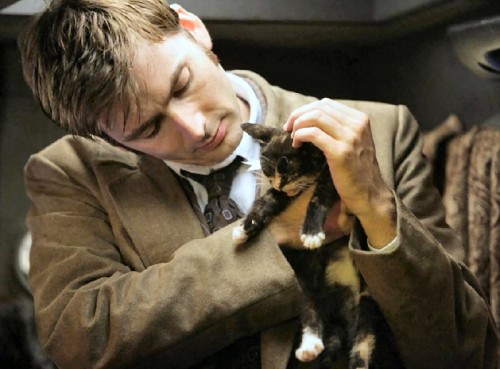So, one of the first things the newly regenerated Doctor does is eat. Little Amelia Pond lets him into her home and they humorously cycle through tons of food options trying to discover what he likes--eventually settling on fish sticks and custard. A curious combination to say the least. But many people in the world don't have access to food--even food they don't particularly like. Worldwide hunger is a huge problem that affects not just people's stomachs, but more importantly their mental capacities and labor capacities. Food helps nourish the body, including the brain, and when the body is starved, it conserves energy by slowing down physical and mental processes. Which means brain functionality and growth is stunted.

There are lots of ways to help financially on a global level, but I thought for the first Giveback we should keep it local. Most cities/towns have a food bank (or more than one) as well as soup kitchens. Consider donating to the food banks or helping out the soup kitchens to serve up hot meals. Also, sometimes there are community food drives going on, which makes it even easier to donate. Check your local news stations or papers to see if there are any happening right now. One thing to remember when donating food is to call up the food bank and see what they need and what they will accept. In fact, Feeding America explains that donating money can be more beneficial to a food bank than actual food. They state that the money can help them to buy and ship healthier foods at much cheaper rates than through food donations1. But make sure to call to find out, all communities have different needs.
While the Doctor and Amy squabble by the duck pond with no ducks, the Doctor suddenly notices that Rory is taking photos of a Prisoner Zero in human form, not the giant bubble over the earth that is going to contain the heat and boil the planet in 20 minutes. This simple photo taking, with Rory's cell phone, leads to the eventual climax of how the Doctor has Prison Zero located via the pictures on Rory's phone (I know that made no sense, but just watch the episode!)
 |
| Did you just say "Recycle me"?? |
Plenty of programs exist that gladly and easily take your cell phones. Donated cell phones can be used as an emergency line by victims of domestic violence, senior citizens, or other at risk people with a pre-programmed automatic 911 dial button. That way they can get the emergency help they need at the touch of a button--it can be the difference between life and death. Other programs donate the phones to those serving in the military with prepaid minutes so that they can call home for free while on duty. If your phone is too old to reuse (like mine), recycling centers will be able to safely recycle your phone and its battery. While you're recycling your phone--don't forget your old batteries as well!
Before you donate your phone, be sure to remove all personal information from all phone memory and removable memory including but not limited to, phonebook entries, personal codes, e-mail addresses, personal addresses, IM addresses, photos, and downloaded files. Many phones have an "auto reset" function that will effectively do all of this at once. Also make sure that your current provider plan isn't still linked to your old phone.
I've provided links to find recycling drop-off locations below, but stores such as Radio Shack, Best Buy, Office Depot and Staples take old phones and you can also call 877-2-RECYCLE to find out Call2Recycle's public donation locations near you.
Helpful Links
Help Combat Hunger:
- Find a local food bank by zip code: http://feedingamerica.org/foodbank-results.aspx
- List of 80 food banks and soup kitchens: http://opendata.socrata.com/Personal/How-to-Volunteer-at-a-Soup-Kitchen/fw6u-sgth?
- Love couponing? Give more for less: http://www.pennyexperiment.com/
Donate or Recycle Your Cell Phone:
- Call2Recycle drop-off locator: http://www.call2recycle.org/drop-off-your-old-batteries.php?c=1&d=513&w=9200&r=Y
- ReCelluar drop-off locator: http://www.recellular.com/recycling/donatePhones.asp
- 911 Cell Phone Bank drop-off locator: http://www.911cellphonebank.org/drop-off-locations.asp
- Cell Phones for Soldiers drop-off locator: http://www.cellphonesforsoldiers.com/locateDropoff.asp
- American Cell Phone Drive drop-off locator: http://www.americancellphonedrive.org/
- http://www.cellphonesforsoldiers.com/about.html
- http://www.911cellphonebank.org/about.asp
- General info on donating: http://volunteerguide.org/volunteer/fifteen/cell-phone-recycling.htm
- Different types of recycling: http://www.call2recycle.org/where-do-i-recycle-.php?c=1&d=322&e=505&w=2&r=Y
- How are phones recycled?: http://www.call2recycle.org/program-physical-flow-chart.php?c=1&d=366&e=493&w=2&r=Y
DISCLAIMER: I am not affiliated with any of these organizations nor can I attest for their accreditation. The photos I have used are not mine and I assume are licensed to the BBC. I am not profiting in any way from this blog, and all photos are used to solely to make the pages more visually exciting while reading. If you are a photo owner or part of these organizations and wish for me to take down photos or links, just let me know and I will do so promptly.














